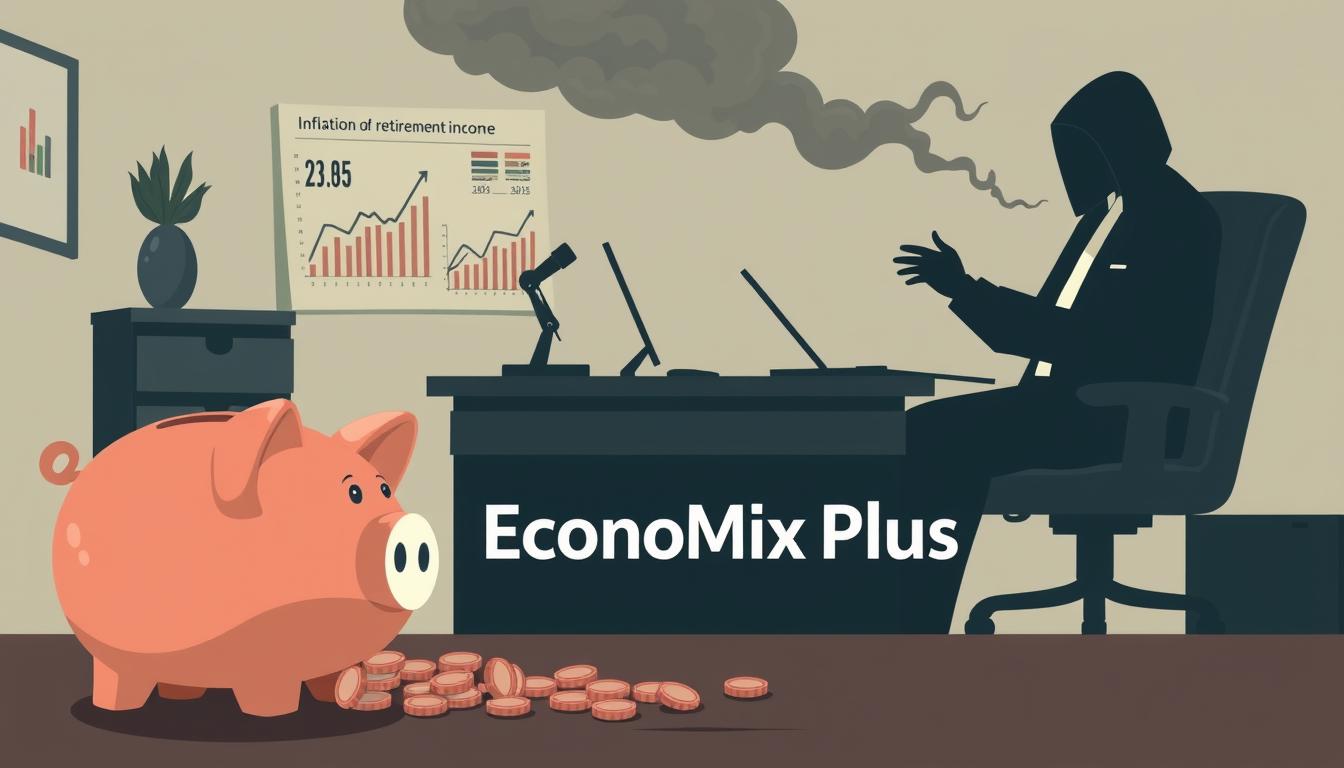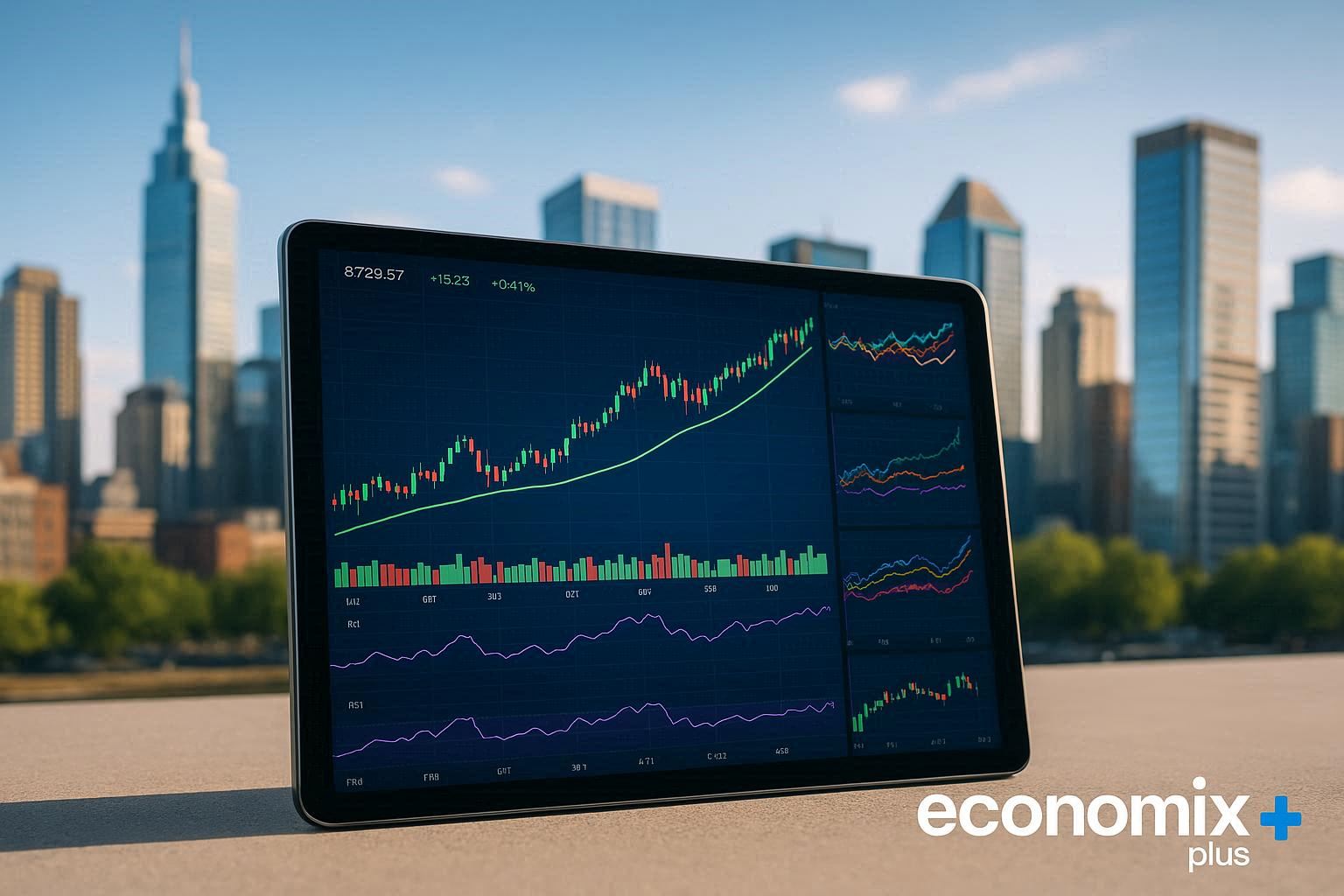As you plan for retirement, a critical concern is the impact of inflation on your income. The steady rise in prices can erode the purchasing power of your money, affecting your ability to maintain a comfortable lifestyle. Recent inflation rates have reached levels not seen in decades, making it a pressing issue for retirees and those nearing retirement.
The Department of Labor defines inflation as the overall general upward price movement of goods and services. As prices rise, the value of money falls, directly affecting your savings and income. Understanding the mechanisms of inflation and its impact is crucial for developing effective strategies to protect your financial security.
Key Takeaways
- Inflation can significantly reduce the purchasing power of your retirement income.
- Retirees on fixed incomes are particularly vulnerable to inflation’s effects.
- Understanding inflation’s mechanisms is key to protecting your savings.
- Different spending patterns and wealth levels affect how inflation impacts retirees.
- Effective retirement planning strategies can help mitigate inflation’s erosive effects.
Understanding Inflation and Its Impact on Retirement
As you plan for retirement, understanding the impact of inflation is crucial. Inflation represents the declining purchasing power of money over time, measured through indexes like the Consumer Price Index (CPI) and Personal Consumption Expenditures (PCE).
What Is Inflation and How Is It Measured?
Inflation is measured by tracking a “basket” of goods and services, including housing, food, energy, transportation, and healthcare costs. The Bureau of Labor Statistics maintains various indexes that measure aspects of inflation. Understanding how inflation is measured helps retirees anticipate which expenses might rise faster than others in their personal budgets.
The CPI tracks the “average change over time in the prices paid by urban consumers for a market basket of consumer goods and services.” Categories include shelter, energy, food, vehicles, medical services, and recreation.
The Current Inflation Landscape in the United States
The current inflation landscape in the United States shows significant increases in essential categories that disproportionately affect retirees. The rate of inflation directly impacts the cost of living, eroding the purchasing power of fixed income sources.
| Category | Impact of Inflation |
|---|---|
| Housing | Increased rent and mortgage costs |
| Food and Energy | Rising costs of essential goods and services |
| Healthcare | Increased costs for medical services and products |
Understanding the current inflation landscape and its measurement helps you prepare for the potential costs and expenses in retirement, ensuring a more stable financial future.
Types of Inflation That Affect Retirees
As you plan for retirement, understanding the different types of inflation is crucial to maintaining your purchasing power. Inflation can manifest in various forms, each with its own causes and effects on your retirement income and expenses. For example, understanding how demand-pull inflation, which arises when consumer demand exceeds supply, can significantly impact your financial strategy.
This type of inflation often leads to higher prices for essential goods and services, making it vital to factor these potential increases into your retirement budget. Similarly, cost-push inflation, which occurs when production costs rise, can lead to increased prices for everything from groceries to healthcare. By recognizing these inflationary trends, you can better prepare for the financial challenges that may arise during your retirement years, ensuring that your savings and income sources can adequately support your lifestyle.
Demand-Pull Inflation
Demand-pull inflation occurs when consumer demand outpaces supply, causing prices to rise as more people compete for limited goods and services. During retirement planning, understanding demand-pull inflation helps you anticipate how economic growth periods might affect your purchasing power. For instance, if there’s a surge in demand for healthcare services, prices may increase, impacting your medical expenses.
Cost-Push Inflation
Cost-push inflation happens when production costs increase, forcing businesses to raise prices to maintain profit margins. This type of inflation is driven by factors such as rising wages, raw material costs, or supply chain disruptions. As a retiree, you may be particularly vulnerable to cost-push inflation if you rely on goods and services that are subject to supply chain issues, such as certain medications or food products.
Built-In Inflation
Built-in inflation, also known as the wage-price spiral, develops when workers expect price increases and demand higher wages, which then leads companies to raise prices further to cover higher labor costs. This creates a cycle where inflation expectations become embedded in the economy, affecting your costs and expenses over time. Understanding built-in inflation can help you adjust your retirement budget and investment strategies to mitigate its impact.
Each type of inflation affects retirees differently, depending on their consumption patterns and income sources. For example, healthcare inflation often exceeds general inflation rates, making it particularly concerning for retirees who typically spend more on medical expenses. By understanding which type of inflation is occurring, you can adjust your spending and investment strategies accordingly to protect your retirement income.
Is Inflation a Threat to Retirement Income?
Inflation poses a significant threat to retirement income, eroding the purchasing power of retirees over time. As inflation rises, the cost of living increases, and the value of money decreases. This can have a dramatic impact on retirees who rely on fixed income sources. The gradual rise in prices means that essential expenses such as housing, food, and healthcare become increasingly burdensome, leading to a potential decline in quality of life. Moreover, many retirees find themselves in a precarious situation as their income does not adjust with inflation, leaving them to make difficult choices about their spending.
For instance, some may have to cut back on necessary medical treatments or reduce their discretionary spending, which can affect their overall well-being. This scenario underscores the importance of financial planning and investment strategies that account for inflation, ensuring that retirees can sustain their living standards despite the rising costs associated with inflation.
How Inflation Erodes Purchasing Power Over Time
The steady increase in prices due to inflation means that the same amount of money can buy fewer goods and services over time. Even a modest 3% annual inflation rate can cut the purchasing power in half over approximately 24 years. This erosion of purchasing power can significantly affect retirees who have limited opportunities to increase their income.
- Inflation reduces the value of fixed income sources, making it challenging for retirees to maintain their standard of living.
- The compounding effect of inflation means that even small annual increases in prices can have dramatic long-term consequences.

The Long-Term Effects on Fixed Income Sources
Fixed income sources are particularly vulnerable to the effects of inflation. As inflation rises, the value of these fixed payments decreases. This can lead to a decline in the standard of living for retirees who rely heavily on these sources.
| Inflation Rate | Impact on Purchasing Power Over 10 Years | Impact on Purchasing Power Over 20 Years |
|---|---|---|
| 2% | 18% reduction | 33% reduction |
| 3% | 26% reduction | 45% reduction |
| 4% | 32% reduction | 54% reduction |
Understanding the impact of inflation on retirement income is crucial for planning. By acknowledging the potential effects of inflation, retirees can take steps to mitigate its impact and ensure a more stable financial future.
Why Different Retirees Experience Inflation Differently
Retirees experience inflation differently based on factors such as wealth, age, and spending habits. While inflation can erode the purchasing power of retirement income, its impact varies significantly among retirees due to differences in their financial situations and lifestyle choices.
Impact Based on Wealth Level
Wealth level plays a crucial role in determining how inflation affects retirees. Higher-wealth retirees typically have more diversified income sources and investment portfolios, which can better withstand inflation. In contrast, lower-wealth retirees who rely heavily on Social Security may be somewhat protected by cost-of-living adjustments, although these adjustments may not always fully match actual inflation rates.

Impact Based on Age and Retirement Stage
Age and retirement stage also significantly influence how retirees experience inflation. Early retirees face longer exposure to the cumulative effects of inflation, while older retirees may spend more on healthcare, which often experiences higher-than-average inflation. Additionally, discretionary spending flexibility varies among retirees; those with higher fixed expenses, such as housing and healthcare, have less ability to adjust their spending during inflationary periods.
Understanding your personal inflation exposure requires analyzing your specific spending patterns rather than relying solely on national inflation statistics. By considering your individual circumstances, you can better prepare for the potential impact of inflation on your retirement income and make informed decisions to protect your financial well-being.
Social Security and Inflation: Understanding COLAs
Inflation can erode the purchasing power of your retirement income, but Social Security’s Cost-of-Living Adjustments (COLAs) help mitigate this effect. As a retiree, understanding how COLAs work is essential to managing your retirement finances effectively.
How Social Security Adjusts for Inflation
Social Security benefits are adjusted annually based on the Consumer Price Index for Urban Wage Earners and Clerical Workers (CPI-W). This adjustment helps ensure that the purchasing power of your benefits is not diminished by inflation. The COLA is calculated as the percentage change in the CPI-W from the third quarter of the previous year to the third quarter of the current year.
Key points to consider:
- COLAs are applied automatically to your Social Security benefits if there’s an increase in the CPI-W.
- The adjustment is made to your benefit amount starting in January of each year.
- Understanding how COLAs are calculated can help you anticipate changes to your benefits during inflationary periods.
Limitations of Cost-of-Living Adjustments
While COLAs provide essential protection against inflation, there are limitations to consider. The CPI-W may not accurately reflect the spending patterns of retirees, as it underweights healthcare and housing costs, which are significant expenses for many retirees.
| Aspect | Description |
|---|---|
| CPI-W Index | May not accurately reflect retirees’ spending patterns |
| Healthcare & Housing Costs | Underweighted in CPI-W, significant for retirees |
| Alternative Index | CPI-E (Elderly) index advocated by some experts for better reflection of retirees’ expenses |

Maximizing your Social Security benefits through delayed claiming can provide greater inflation protection, as COLAs apply to a larger base benefit amount. It’s crucial to consider these factors when planning your retirement income strategy.
Creating an Inflation-Resistant Retirement Budget
To maintain your standard of living in retirement, it’s vital to create a budget that accounts for inflation. As you approach retirement, understanding how to manage your expenses in the face of rising prices is crucial for financial security.
50/15/5 Budgeting Guideline for Pre-Retirees
Fidelity’s 50/15/5 budgeting guideline provides a framework for pre-retirees to manage their finances effectively. This guideline suggests allocating:
- 50% of your take-home pay towards essential expenses.
- At least 15% of your pre-tax income towards retirement savings, including any employer match.
- 5% of your take-home pay towards emergency funds or short-term goals.
| Category | Percentage | Description |
|---|---|---|
| Essential Expenses | 50% | Housing, utilities, food, and minimum debt payments |
| Retirement Savings | 15% | Pre-tax income, including employer match |
| Emergency Funds | 5% | Short-term goals and unexpected expenses |
Adjusting Your Budget During High Inflation Periods
During periods of high inflation, it’s essential to adjust your budget to maintain your purchasing power. This involves:
- Tracking your personal inflation rate by monitoring changes in your most significant expense categories.
- Prioritizing essential expenses while identifying discretionary spending that can be temporarily reduced.
- Creating separate budget categories for expenses that typically experience higher inflation, such as healthcare.
By regularly reviewing and adjusting your budget in response to changing inflation conditions, you can ensure that your retirement savings continue to support your lifestyle. Consider consulting with a financial advisor to tailor a budget that meets your specific needs and helps you navigate inflation.
Investment Strategies to Combat Inflation
To mitigate the effects of inflation on retirement income, investors should consider implementing specific investment strategies. As inflation affects retirement savings, it’s crucial to have a well-diversified portfolio that can withstand inflationary pressures.
Equity Investments as Inflation Protection
Equity investments can serve as a hedge against inflation because companies can raise prices during inflationary periods, potentially increasing earnings and stock values. Historically, stocks have provided a level of protection against inflation, although they come with their own set of risks. Dividend-growing stocks are particularly beneficial as they offer both current income and the potential for income growth that can keep pace with or exceed inflation rates.
Real Assets and Alternative Investments
Real assets, such as real estate investment trusts (REITs), often perform well during periods of inflation because property values and rents typically rise with inflation. Alternative investments like commodities can also serve as inflation hedges, though they require careful evaluation due to their associated risks. Diversification across different asset classes remains fundamental to creating an inflation-resistant portfolio, as various assets respond differently to inflation.
| Investment Type | Inflation Protection | Risk Level |
|---|---|---|
| Equity Investments | Historically provides protection through potential price increases and earnings growth | Medium to High |
| Real Assets (REITs) | Performs well as property values and rents rise with inflation | Medium |
| Alternative Investments (Commodities) | Can serve as an inflation hedge | High |
Maintaining an appropriate equity allocation throughout retirement helps combat inflation‘s long-term effects, even for retirees who need income. Regular portfolio rebalancing becomes especially important during inflationary periods to maintain your target asset allocation as different investments respond to economic conditions in the market.
The Role of Housing in Inflation Protection
Housing plays a crucial role in shielding retirees from the effects of inflation. As a significant expense and potential asset, housing decisions are particularly important during inflationary periods.
For retirees, the choice between homeownership and renting can have a substantial impact on their financial stability during times of rising costs. Homeowners with fixed-rate mortgages benefit from inflation as they repay their loans with devalued dollars, while their home potentially appreciates in value.
Homeownership vs. Renting During Inflationary Periods
Homeownership can provide a level of protection against inflation, as the monthly mortgage payment remains constant. In contrast, renters face greater inflation risk as landlords typically raise rents to keep pace with inflation, creating unpredictable housing costs.
- Homeowners with fixed-rate mortgages benefit from inflation.
- Renters face unpredictable housing cost increases.
- Retirees who own their homes outright eliminate housing payment uncertainty.
Using Home Equity as an Inflation Hedge
Home equity can serve as a valuable asset in retirement, providing a potential source of income through options like downsizing or home equity lines of credit. However, it’s essential to consider the local market conditions and expenses associated with maintaining a home.
By understanding the role of housing in retirement and making informed decisions, you can better protect your financial security against inflation.
Recovering from Inflation-Related Setbacks
Inflation-related setbacks can be challenging, yet with the right strategies, you can get back on track with your retirement goals. Inflation can erode the purchasing power of your retirement savings, making it essential to adjust your plan.
Catch-Up Strategies for Retirement Savings
If you’ve experienced a setback in your retirement savings due to inflation, consider taking advantage of catch-up contributions. For individuals aged 50 and older, the IRS allows increased contribution limits to retirement accounts. This can be a valuable opportunity to boost your savings and make up for lost time.
- Maximize your retirement account contributions.
- Utilize catch-up contributions if you’re 50 or older.
- Reassess your budget to allocate more funds towards savings.
| Age | Standard Contribution Limit | Catch-Up Contribution | Total Contribution |
|---|---|---|---|
| 50+ | $20,500 | $6,500 | $27,000 |
| <50 | $20,500 | $0 | $20,500 |
Adjusting Your Retirement Timeline
Adjusting your retirement timeline can also help you recover from inflation-related setbacks. Working a few additional years can significantly improve your financial outlook by allowing continued savings, delaying withdrawals, and potentially increasing your Social Security benefits.
- Consider working longer to boost your savings.
- Delay withdrawals from your retirement accounts.
- Reassess your retirement spending expectations.
By making these strategic adjustments, you can better navigate the challenges posed by inflation and secure your retirement.
Maintaining Your Retirement Plan During Market Volatility
Inflation and market volatility can be a daunting combination for retirees trying to secure their financial future. As you navigate these challenges, it’s essential to maintain a well-structured retirement plan.
The Importance of Staying Invested Through Uncertainty
Historical data consistently shows that staying invested through market turbulence typically yields better long-term results than attempting to time the market. During the Global Financial Crisis in 2007-2009, investors who continued to save and invest, rather than selling their stocks, were able to recover from the downturn and take advantage of subsequent growth. Maintaining a long-term perspective is crucial during inflationary periods, as short-term reactions to market movements can permanently damage your retirement security.
Rebalancing Strategies During Inflationary Periods
Regular portfolio rebalancing becomes especially important during volatile markets to maintain your target asset allocation and risk level. Diversification across asset classes that respond differently to inflation provides protection against market volatility while maintaining growth potential. Having a written investment policy statement helps maintain discipline during market turbulence by clearly outlining your investment strategy and goals. Avoid making dramatic portfolio changes based on short-term inflation news or market movements to protect your long-term retirement plan.
By staying invested and maintaining a rebalanced portfolio, you can navigate the challenges of inflation and market volatility, ensuring a more secure retirement.
Tax Considerations in an Inflationary Environment
As inflation rises, understanding its impact on your tax obligations becomes crucial for effective retirement planning. Inflation creates both tax challenges and opportunities for retirees that require strategic planning to navigate effectively.
How Inflation Affects Tax Brackets and Deductions
While income tax brackets are adjusted annually for inflation, these adjustments may not perfectly match your personal inflation experience, potentially pushing you into higher brackets. For instance, even if your income keeps pace with inflation, you might still face a higher tax rate due to the progressive nature of the tax system. Additionally, mortgage interest deductions can be affected as inflation influences interest rates. It’s essential to review your tax situation annually to understand how inflation impacts your specific circumstances.
Tax-Efficient Withdrawal Strategies
Tax-efficient withdrawal strategies become even more important during inflation, as they help maximize the after-tax value of your retirement income. Required Minimum Distributions (RMDs) from retirement accounts can create tax complications during inflationary periods as withdrawal amounts increase. Strategically timing income recognition and deductions can help minimize tax burdens. Working with a tax professional to develop inflation-aware tax strategies can help preserve your retirement savings and income.
Conclusion: Building Resilience Against Inflation
To ensure a comfortable retirement, it’s vital to understand how inflation influences your savings and income. As CPA Larry Pon of Pon & Associates notes, “Inflation’s impact on retirement and retirement savings is very complex.” It can have both positive and negative effects, depending on your financial situation and planning strategies.
Building resilience against inflation requires a comprehensive approach that addresses income sources, investment strategies, spending patterns, and tax planning. By diversifying your assets and creating multiple income streams for retirement, you can naturally hedge against inflation. Regular reviews and adjustments to your retirement plan are essential as inflation rates change and personal circumstances evolve.
Focusing on what you can control—such as saving rates, spending decisions, and asset allocation—provides confidence during uncertain economic times. Maintaining financial flexibility through emergency funds and accessible assets helps navigate unexpected inflation spikes or economic changes. Starting inflation planning early provides more options and reduces the need for dramatic adjustments later in life.
By adopting a proactive and adaptable approach to retirement planning, you can protect your savings and ensure a more secure financial future. Today, it’s more important than ever to prioritize inflation planning as part of your overall retirement strategy.














